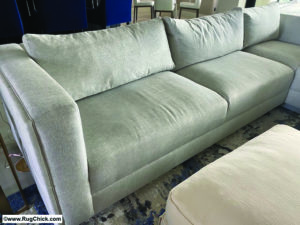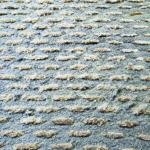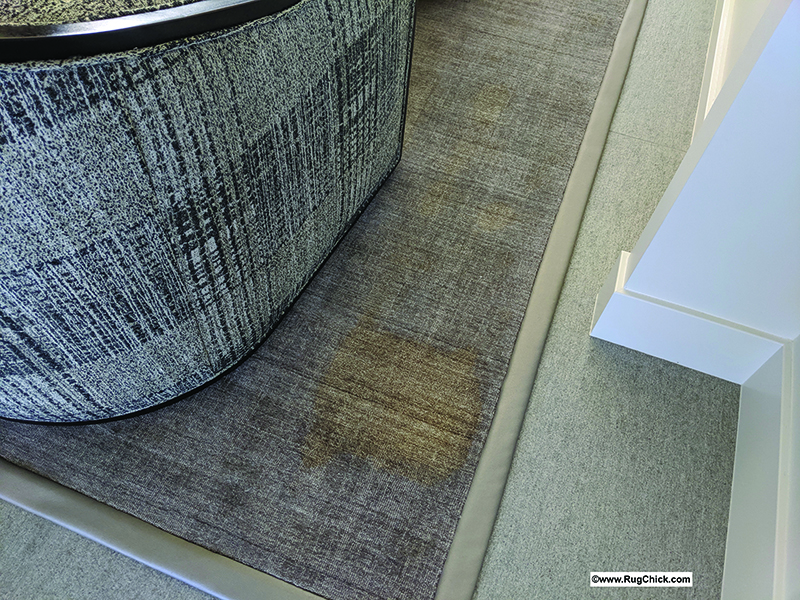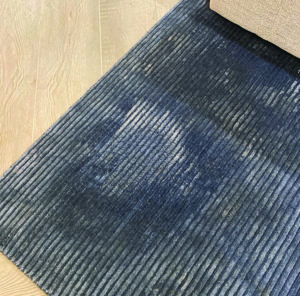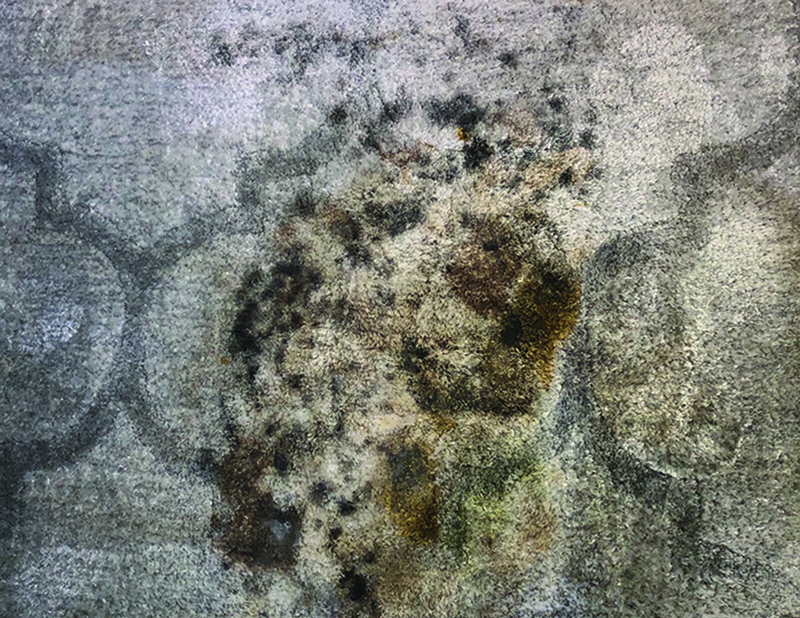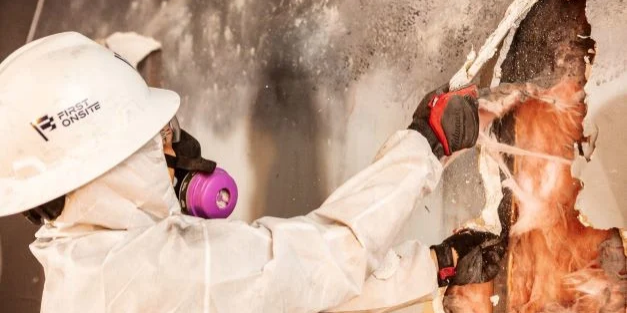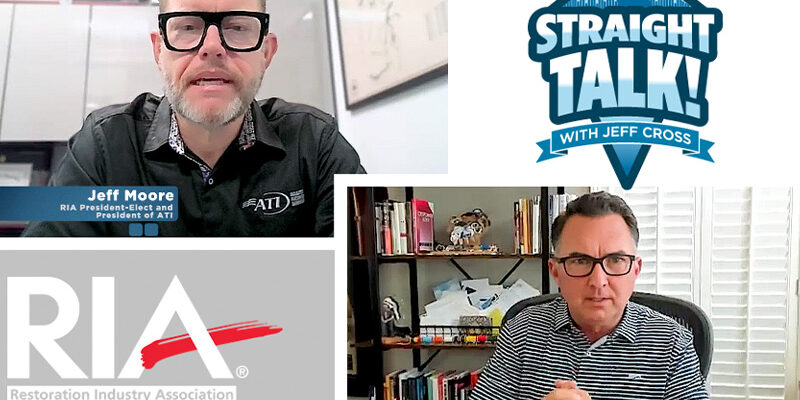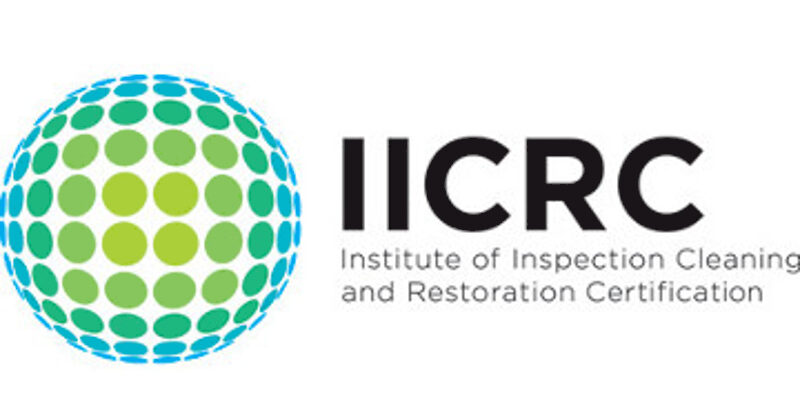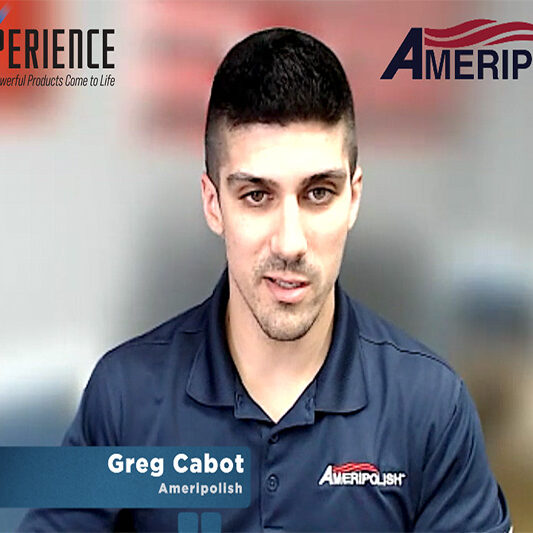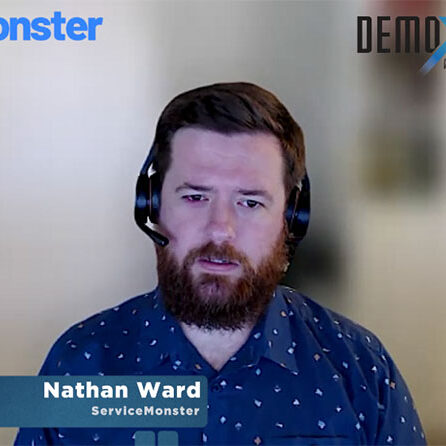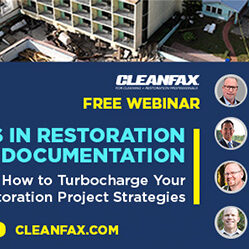The Battle Against Viscose
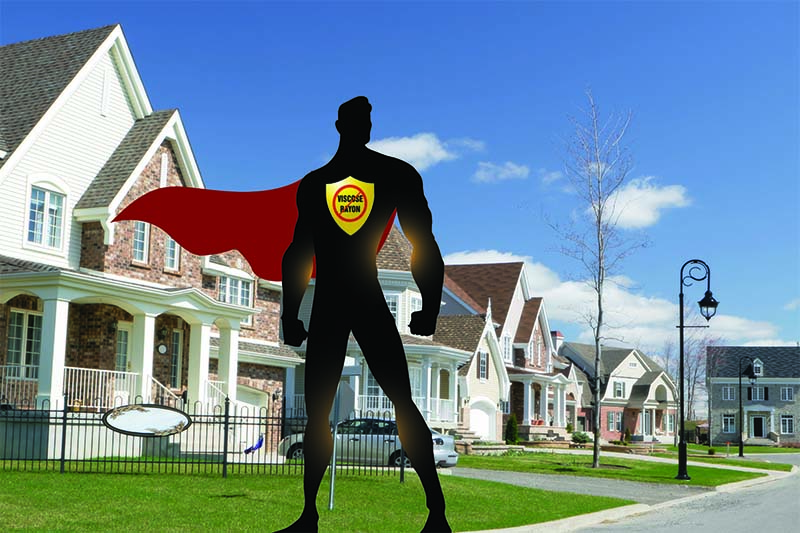
By Lisa Wagner
Viscose rayon is a fiber that exists in just about every home. It is used in creating paper towels, kitchen sponges, diaper liners, and sanitary products. It is very absorbent and often biodegradable.This makes it great for cleaning up messes; however, it is a horrible choice for a floorcovering or fabric exposed to any kind of daily foot traffic, moisture, oils, spills, pet accidents, or dust.
Viscose belongs to a category of fibers that professional cleaners are seeing much more of these days—regenerated cellulose fibers. These fibers are made of wood and plant pulp which is heavily chemically processed to give it a soft, glossy finish.
It is artificial silk; however, it is rarely sold under the name “fake silk.” Instead regenerated cellulose fibers are sold under many names: viscose, rayon, manmade silk, art silk, bamboo silk, banana silk, cactus silk, Silkette, Luxcelle, Lyocel, and Tencel. This is why many consumers believe they have actually invested in real silk rather than in what is essentially a “paper,” disposable fiber.
If you have not seen many of these fibers yet, you will. This fiber, which has been the most problematic in the rug cleaning world for the past few years, is heavily moving into both furniture fabrics and installed wall-to-wall carpeting.
There are many problems with the care and durability of these fibers, but the biggest problem is that they are often sold as “luxury” fibers at luxury prices, and consumers are not being informed about the realities of this product.
Sometimes this lack of information is intentional, with sellers trying to push a sale through at maximum profit, but sometimes the lack of information is due to the manufacturers of these fibers misleading distributors about their products and product performance. That misinformation is then passed on to the consumers.
Unfortunately, most rug, furniture, and carpet retailers do not seek out a deep technical understanding of their products in terms of clean-ability, durability, and longevity. Neither do many interior designers. It is the truly exceptional interior designer who takes fabric samples and rug choices to a textile cleaning specialist to ask which ones will be best for their client’s dining room, family room, or kids’ rooms.This lack of consumer education is an opportunity for professional cleaners to become the one resource that consumers can trust for guidance on their rugs, furniture, and carpet choices. Cleaners are not being paid a commission on the sale, and they have the firsthand experience of cleaning all types of fibers, so what better person to get that reliable feedback from?
The lies being told about viscose to consumers
With thousands of readers visiting my Rug Chick blog weekly, I have a steady stream of questions and problems concerning all regenerated cellulose fibers. It is the top topic from rug shoppers, rug owners having problems, and professional cleaners.
Let’s look at some of the lies and half-truths being told to consumers about these fibers for their furniture and floorcoverings:
“It is a luxury fiber.”
It is true that there is no fiber that quite has the look, feel, and texture of a regenerated cellulose fiber rug… when it is brand new.
The challenge is these rugs are like a fresh snowfall. They will show each and every step you take for as long as you choose to walk on it. They require constant grooming, which is problematic because the fibers tend to pull, sprout, and lose their sheen with even a little soiling or foot traffic friction.
Within a short period of time these fibers lose color, shine, and texture. With spills or clean-up attempts in the home, the results are often disastrous.
“Luxury” implies quality. High prices imply longevity.
Hand-knotted wool rugs can last a century or longer with proper care. Viscose rugs will give owners a year or two before they start thinking about finding the replacement. Consumers are purchasing a high-priced disposable rug, yet many are not being told that the life of their new rug is going to be so short.
“It is easy to maintain.”
I recently had a rug shopper share with me her experience of having a retailer explain how “easy” a bamboo silk rug would be to maintain in the dining room. I explained that this would be the worst choice for her dining room or any room with regular use.
Viscose and all regenerated cellulose fibers have no ability to hide soil. They gray with even light dust in traffic areas, and they yellow with even mild moisture from spills. At-home attempts to clean up spills and repeated vacuuming in traffic areas tend to make these areas look even worse.
This means that professional cleaning is needed much more often for these rugs and furniture, which can be an unexpected additional expense added to an already costly purchase. It may even be challenging to find a good professional cleaner for the job since a number of companies refuse to clean viscose.It is not uncommon to see viscose rugs in for cleaning several times a year—not because the household is dirty but because the rug looks dirty faster than any other fiber.
One of the challenges for professional cleaners with this fiber is that ideally it should be dry cleaned with low-moisture or solvent cleaning methods to minimize texture change. However, “wet” problems need to be cleaned with “wet” methods. Large spills, water damage, pet accidents, and heavy, ground-in soil all require more than surface cleaning to get better results and remove the contaminants.
With the introduction of viscose into fabrics on furniture, this problem becomes even worse because all the areas that accumulate body oils and hand oils darken, and the friction points along the arms fray and break. This makes cleaning viscose fabric perhaps one of the most difficult areas in our industry.
If a client, despite all of the information, chooses a viscose rug for her home, then I strongly recommend a fiber protector be applied on day one just to give the rug a fighting chance to last a bit longer under normal use. Even folding these rugs up to ship them can cause permanent crease, crush, and texture damage.
“It is eco-friendly.”
When rug shoppers share that the salesperson has told them that viscose is an eco-friendly choice and they want to know if it’s true, I tell them this depends on how they define “eco-friendly.”
If they are concerned about items breaking down and being biodegradable in landfills, then, yes. Considering these products begin to break down immediately upon use and do not last, they are not long for this world. Remember that these are essentially paper-based, so they burn easily, and they also mildew when exposed to moisture.
If the eco-friendly focus is on the production side, then the answer is “no.” In his book, Fake Silk, Dr. Paul David Blanc demonstrates with heartbreaking, scientific detail that viscose rayon production is one of the most toxic production processes in our history. Both land and workers have been destroyed by the consumer desire for fake silk.
It is difficult to read the book and ever look at the viscose rayon industry the same.
The making of viscose rayon fabric is banned in the U.S., so the disease and death caused by the main chemical used in its production (carbon disulfide) occurs in India, China, Indonesia, and Malaysia. The making of disposable fibers is often dependent on a workforce that these countries also view, unfortunately, as disposable. In this regard, viscose is far from an “eco-friendly” fiber.

Lycell rugs are cleaner production, but also are subject to color and sheen loss in use. [Click to view larger]
These fibers have a higher purchase price and perform better in clothing longevity, but they do still have a tendency to lose color and texture just as their toxic fiber relatives do.
Another question for those seeking out a choice that is “eco-friendly” is whether a rug that requires much more frequent cleaning is considered good for the planet.
For professional cleaners, viscose rugs are some of our most frequent visitors. If customers are concerned about making an ecologically conscious choice, it is worth considering which is truly more sustainable: a biodegradable viscose rug that might need to be cleaned two or three times each year and replaced every few years or a wool, hand-knotted rug that might need a full wash every two or three years and will last decades.
“It is what the consumers want.”
What I hear from retailers and designers is that viscose is what consumers want, so that is why they are selling it.
I have also heard more than once from designers that their client has plenty of money, so they don’t care if a rug is disposable.
Yet, when I have had discussions with consumers who have put down tens of thousands of dollars in deposits for furniture and rugs, who then discovered the realities of these fibers in regular household use, I find that they always make another choice.
When a plain water spill on viscose can lead to permanent fiber damage, that is a problem in most homes, regardless of economic status. That problem is rarely shared with homeowners before the sale.What professional cleaners can do
People expect their “luxury” product to clean up luxuriously. However, even the most skilled professional cleaners are only able to do so much with what is the worst-performing fiber in homes today.
You cannot expertly polish IKEA particle board furniture and make it into beautiful mahogany wood. Likewise, no professional cleaner is going to be able to make fake silk into a rug or sofa that was worth the price paid for it.
However, professional cleaners do have two opportunities when dealing with viscose: First, of course, is to become technically skilled at viscose care to help owners of these items keep their purchases looking as good as they can for as long as they can. Second, and more important, is to become your customers’ trusted resource for their next purchases, because no one ever buys viscose for their floor or furniture a second time.
Lisa Wagner is a second-generation rug care expert, NIRC Certified Rug Specialist, and an owner of Blatchford’s Rug Cleaning in San Diego, California. For rug course and training details, visit www.rugchick.com.


